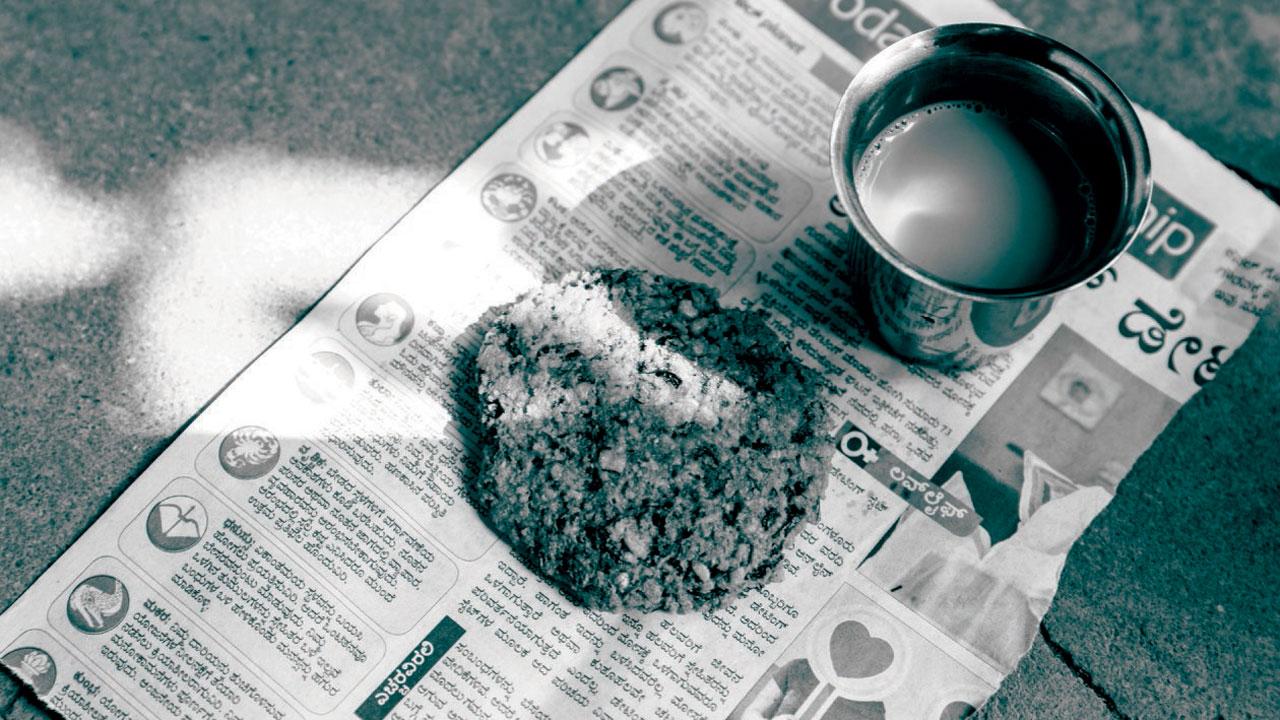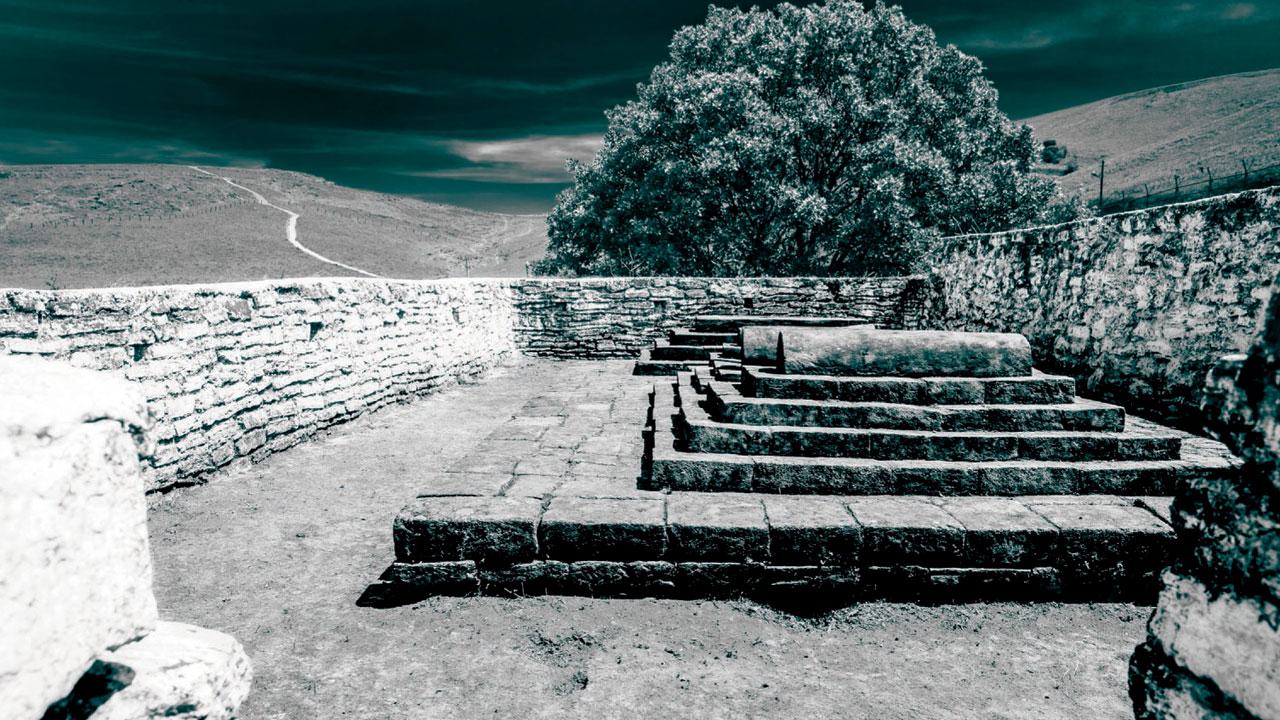Surgeon-author Dr Kavery Nambisan’s new book reveals the origin story of South India’s favourite morning drink, and how it changed the economics of the nation

Local coffee shop in Pollibetta, Kodagu, where the workers love to hang out. Pics/Madhu Kapparath
While Mahatma Gandhi is reported to have described tea as an “intoxicant”, his views about coffee remain relatively unknown. But in 1921, his weekly paper, Young India, had published a letter, which stated that “fashionable Brahmin ladies drank up to three cups of coffee a day,... and whiled away their time in idle gossip when it was their duty to... keep away from the evil drink and join the freedom struggle”. Around the same time, another development troubled Gandhi no end—the caste-based segregation prevalent in coffee houses of the day, with many putting up signs like ‘Brahmins only’, ‘Shudras not allowed’ or ‘Shudras, Panchamas, Muslims and Christians will not be served food, snacks or water here’. “In Salem, Tamil Nadu, the Congress party actually fought for a resolution to cancel the licences of coffee houses which promoted caste prejudice,” says author Dr Kavery Nambisan in her just-released book, Cherry Red, Cherry Black: The Story of Coffee in India (Bloomsbury; Rs 699).
ADVERTISEMENT

A scrumptious vada and piping hot coffee served on previous day’s newspaper displaying the ‘Daily Forecast’ and ‘Lovelife’ columns
That coffee was at the centre of a brewing controversy when India was in the throes of fighting for independence, may come as an amusing revelation to some. But for a drink whose history in the country is as old as the British Raj, such a trajectory is only natural. The book, comprising photographs by Madhu Kapparath, unravels the social, political and economic history of kaapi, and how this once elitist beverage went on to become the household drink as we know it today. For Kodagu-based Nambisan, who was born and raised in a coffee estate, this story was equally personal. “It was nothing short of a golden childhood,” she says of her time in her family estate. “We spent all day amidst coffee bushes, in paddy fields, wading in the stream that passed through our fields, catching crabs, eating oranges and wild berries, fishing for the miniature-sized fish called koile menu [smaller than a tiny pencil stub] and playing on haystacks,” she tells mid-day. Revisiting the coffee story gave her the opportunity to learn how coffee plantations, like tea, were started by the British as a profitable cash crop.

Saluting the man who introduced coffee to India—the shrine of Baba Budan
Its cultivation in the south, however, was the result of a discovery by Hazarat Shah Magatabi, a devout Muslim who lived in the village of Kadur (now Chikmagalur) in the kingdom of Mysore in the early decades of the 17th century. He is said to have set out on a voyage across the Arabian Sea to Mecca. When the voyage on their tiny steamer became perilous, they were expected to keep watch all day, and given a dark concoction made from roasted and ground seeds, sweetened with date syrup, “to kick open their eyes and senses”. Hazarat Shah was so taken by the magic drink that on his way back home, he smuggled a handful of coffee seeds through the port of Yemen. That’s how farming communities in Coorg (Kodagu), Hassan and Chikmaglur in Karnataka and Wayanad in Kerala, started growing coffee. “Most of them had small patches of land adjacent to their homes for their own use, and for sale. But the earnings were modest. Most of the coffee was being shipped to London and Edinburgh markets, with brokers deciding the price. It took half a century or more for coffee growers to come together to form planters associations, which helped them seek better prices,” she says.

Dr Kavery Nambisan
Regions like Coorg grew rice until the British colonised it in 1834. The creation of coffee plantations, hence, brought newer challenges. “It was very difficult for planters to ensure a good crop, since they were totally dependent on the time and the amount of rainfall. For instance, during the season when the coffee blossoms appear, there should be no rain for at least 10 days, as it could destroy the delicate blossoms. Once the blossoms have ‘set’, rains are essential. Now, who can command the heavens? It is only after the introduction of artificial irrigation that coffee production began to improve,” adds Nambisan, who has worked as a surgeon in rural areas throughout India.
How Indians took a shine to kaapi, Nambisan says, is one of the more “delightful social enigmas that we see in society”. “It was the British who were drinking coffee in great style, with larger cups to serve morning coffee and tiny cups for the after-dinner brew. Indians saw; Indians copied. It is said that in southern cities like Madras and Bangalore, it was mainly the upper classes who began to flaunt the beverage. Then the working class saw and the working class copied! It was not only fashionable, but it was also a good drink. A stimulant.”
Her book also looks at how the coffee industry evolved post-independence, particularly the arrival of Tata Group, which in 1989 purchased large shares in Consolidated Coffee Estates as an open buyer. “The entry of large stakeholders brought about huge changes in production, quality, and labour welfare,” says Nambisan.
The plantation industry’s “long and tenuous” history of providing adequate welfare measures for its employees, also slowly began to iron out. “In the early years of the freedom struggle, the plantation labour were some of the most impoverished among the labour class. The wages were extremely low and there was every form of oppression, including bonded labour,” says Nambisan. In the book, she highlights how in the 1850s, a male worker in a coffee plantation earned two annas per week and a female one anna and four paise. The Prevention of Coffee Stealing Act (1878), and the Plantation Act of Madras (1903), only “increased the stranglehold over those working under them”. “...any worker in possession of fresh coffee berries was liable to severe punishment; if he absented himself from work, not only did he forfeit his wages, but he also had to pay four times his daily wage for each day lost, and he was not allowed to resume work until he had made good this amount to the planter. He could also be jailed for his offence,” she shares in the book. But things changed around the time of Independence, when “the labour unions came to the fore”. “Their role in the subsequent emancipation of plantation labour is truly significant,” she asserts.
Make yourself a steeping coffee
The simple brew made through steeping is perhaps the most basic method of making coffee. It is made this way in most rural homes and average roadside restaurants within the coffee-growing belt. You simply mix coffee grinds directly with hot water, allowing the two to work their magic, and then separate them, keeping the coffee and dumping the wet coffee grinds. It is simple if you know the length of time necessary to steep your brew. Over-steeped or under-steeped brew is too weak or too bitter and too strong to be any good. If you get it right, you will drink a very good cup of coffee.
Heat water in a saucepan and add a heaped spoon of coffee powder as soon as it begins to boil, and take the pan off the fire. Allow it to brew for three minutes, by which time the sediments will settle at the bottom of the pan. Then pour the coffee gently over a thin piece of cloth into a cup. Add hot milk and sugar and you have a steaming cup of coffee with a nice froth on top.
Excerpted from Cherry Red, Cherry Black: The Story of Coffee in India by Dr Kavery Nambisan
 Subscribe today by clicking the link and stay updated with the latest news!" Click here!
Subscribe today by clicking the link and stay updated with the latest news!" Click here!







